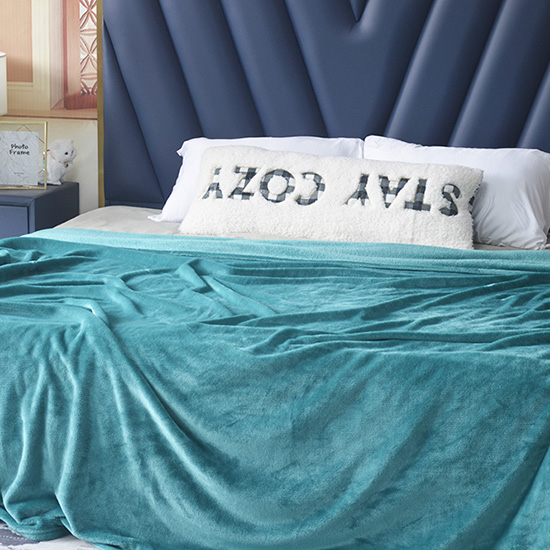How to produce flannel blanket?
2024-07-23
How to produce flannel blanket?
Producing a flannel blanket involves several key steps that combine craftsmanship with modern manufacturing techniques. Flannel blankets are cherished for their softness, warmth, and versatility, making them a popular choice in both homes and businesses. Whether you're looking to start a small-scale production or understand the intricate process behind creating these cozy blankets, here's a comprehensive guide that covers everything from material selection to finishing touches.
1. Understanding Flannel
Flannel is a textile that is typically made from wool, cotton, or synthetic fibers. Its characteristic softness and warmth come from its loosely spun yarn, which is then brushed to create a nap (a soft, fuzzy texture). Flannel blankets can be made from 100% cotton, a cotton-polyester blend, or even from other synthetic fibers. The choice of material affects the blanket's feel, warmth, and durability.
2. Materials Needed
To produce flannel blankets, you will need:
Fabric: Rolls of flannel fabric in the desired material (cotton, polyester, or blends).
Thread: High-quality thread suitable for sewing flannel.
Cutting Tools: Scissors, rotary cutters, or fabric cutting machines.
Sewing Machines: Industrial or heavy-duty sewing machines capable of handling thick fabrics.
Finishing Tools: Irons, pressing cloths, and possibly a serger for finishing edges.
3. Production Process
Step 1: Design and Pattern Making
Design: Create or select a design for your flannel blanket. This may involve choosing colors, patterns, and deciding on any decorative elements like borders or trims.
Pattern Making: Develop a pattern if you are producing blankets of specific sizes or shapes. Patterns can be made from paper or digitally.
Step 2: Cutting the Fabric
Preparation: Lay out the flannel fabric in layers to ensure uniformity in cutting.
Cutting: Use scissors, rotary cutters, or fabric cutting machines to cut the fabric according to your pattern or desired size.
Step 3: Sewing
Assembly: Lay out the pieces of cut fabric according to your design.
Sewing: Use sewing machines to stitch the pieces together. This includes sewing the top and bottom layers together and possibly adding decorative stitching or quilting.
Step 4: Finishing
Pressing: Iron the blanket to flatten seams and ensure smoothness.
Edging: Finish the edges of the blanket. This can be done with a serger, rolled hem, or bias tape to prevent fraying and add durability.
Quality Check: Inspect the blanket for any loose threads, uneven stitching, or imperfections.
Step 5: Packaging
Folding: Fold the blankets neatly.
Packaging: Package the blankets appropriately for storage or shipping. This may include inserting them into plastic bags or adding tags.
4. Quality Control
Quality control is crucial to ensure that each flannel blanket meets your standards and those of your customers. Inspect each blanket for:
Stitching quality
Fabric flaws
Size and shape accuracy
Color consistency
5. Market Considerations
Before diving into production, consider market research to understand:
Demand: Identify the target market for your flannel blankets.
Competition: Analyze competitors and their offerings.
Price Points: Determine pricing based on production costs and market trends.
6. Scaling Production
As demand grows, scaling production may involve:
Automation: Investing in automated cutting and sewing equipment.
Outsourcing: Using third-party manufacturers or contractors.
Inventory Management: Implementing systems to track inventory and manage orders efficiently.
7. Environmental and Ethical Considerations
Consider the environmental impact of your production processes and materials. Sustainable sourcing, waste reduction, and ethical manufacturing practices can appeal to environmentally conscious consumers.
8. Legal and Safety Considerations
Ensure compliance with local regulations regarding manufacturing standards, labeling requirements, and safety guidelines for textiles.
Conclusion
Producing flannel blankets combines craftsmanship with industrial production techniques. By understanding the materials, processes, and market dynamics involved, you can create high-quality blankets that meet consumer demand while ensuring efficiency and profitability in your production operations. Whether you're starting small or scaling up, the key lies in attention to detail, quality control, and understanding your target market's preferences.



